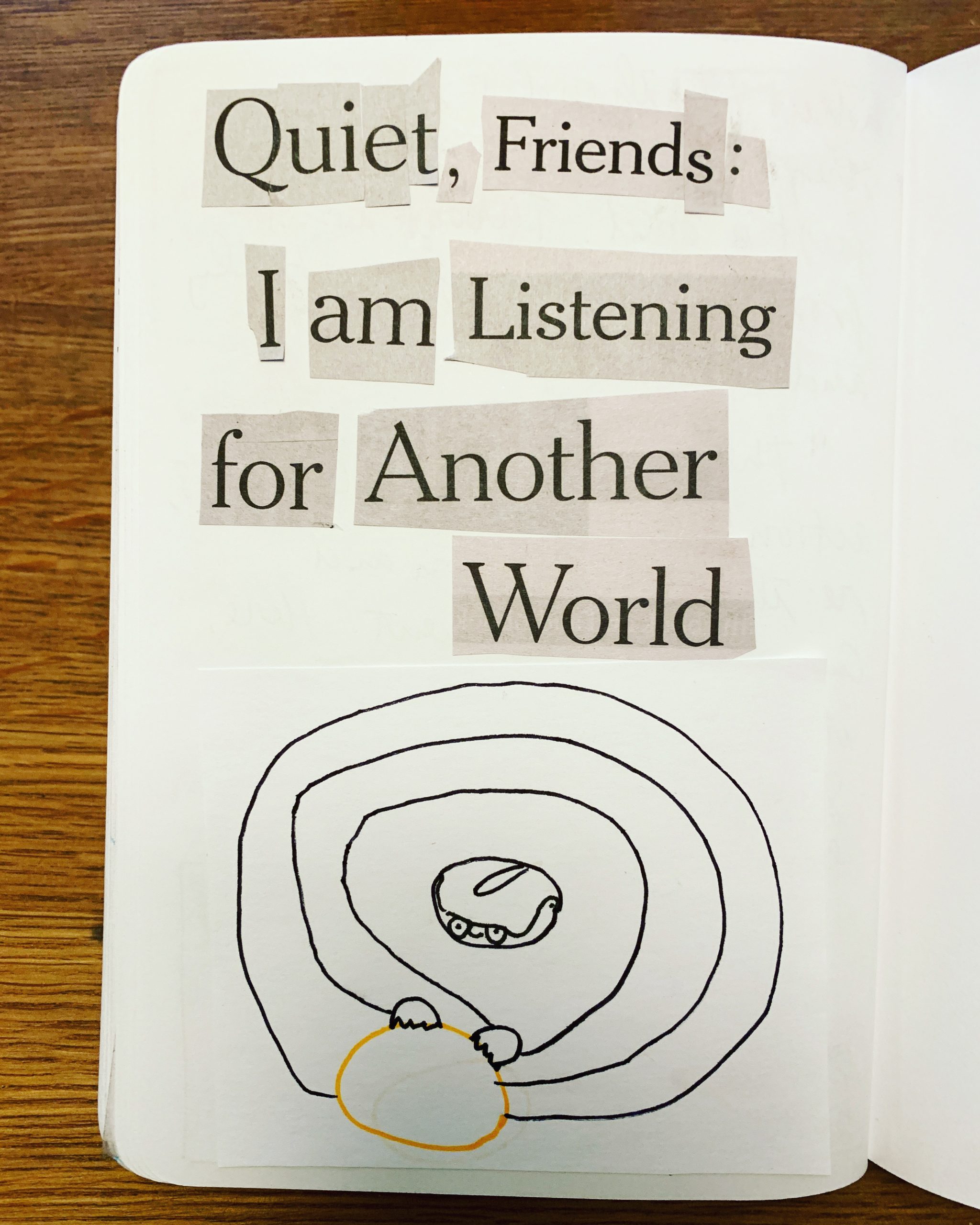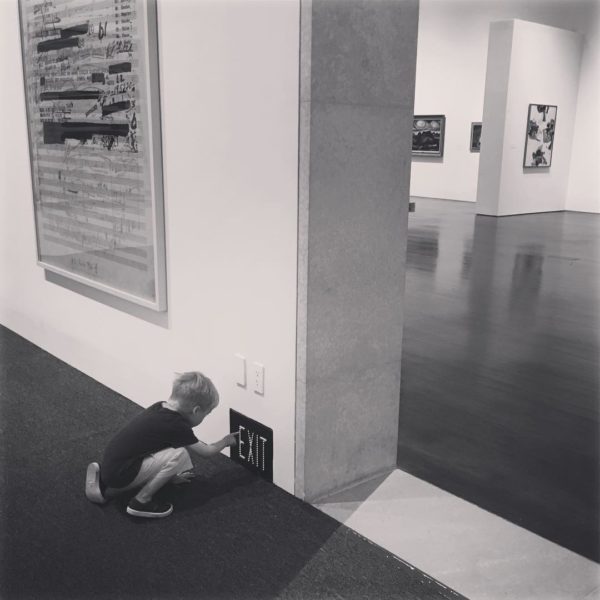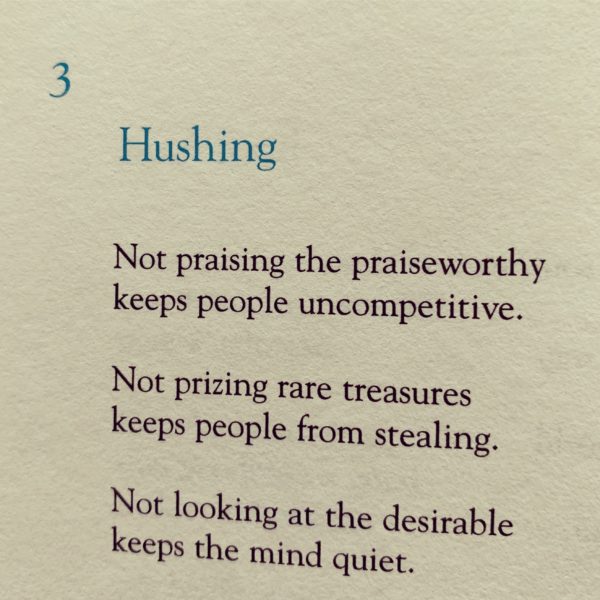
My kids leave abandoned drawings all over the house, so I like to steal them and add (the wrong) words. This is my 7-year-old’s drawing + words clipped from the newspaper.

My kids leave abandoned drawings all over the house, so I like to steal them and add (the wrong) words. This is my 7-year-old’s drawing + words clipped from the newspaper.

I was intrigued by Gretchen Rubin’s Met Museum Experiment, in which she plans to visit the Met every day of this year that she’s in NYC. (She lives within walking distance.)
Her experiment and her goals — to waken her senses, to learn about art, to explore the building space, to see more clearly, though she doesn’t feel she’s a visual person — got me thinking about how I like to visit museums.
Here are 3 things I do that make my museum experiences much richer:
1. Draw, draw, draw! When you try to draw something, even with just a rough sketch, you really have to look at it, and you notice all kinds of things you don’t by just standing around gawking at it. I always have a pocket notebook and a pencil or two with me. (Many museums don’t let you use pen or marker in the galleries.) I stand and copy the art I like, often just swiping a detail here and there from different pieces. (I write more about drawing and “slow looking” in chapter 5 of Keep Going.)
2. Enlist a small child to guide you through the museum. Kids are alive to the world in ways we aren’t as adults. They’re also lower to the ground, so their perspective is literally different. (More on this: “The 5-year-old docent” and “Borrow a kid.”)
3. Don’t read the label before you look at the art. Watch people the next time you’re in a museum gallery. They almost always look at the labels first! Don’t do this. Use your own eyes first. Let yourself be drawn towards what is genuinely interesting to you. Spend time looking at a piece without having someone else’s words messing with your looking. (More on this in Edward Tufte’s essay, “Seeing Around.”)


I came across these lines yesterday when I was flipping through Ursula K. Le Guin’s translation of Lao Tau’s Tao Te Ching. (I like the title she chose, “Hushing.” It reminds me of the “Locking” season.)
I once mentioned to my five-year-old son that his favorite band, Kraftwerk, had won a Grammy.
“What’s an award?” he asked.
“It’s like a prize that you get for doing something well,” I said.
“Oh,” he said. “What’s a prize?”
It made my day. Imagine a world with no gold stars!

“One of the things you’ll hear people say, when they tell me they wish they could draw, is, ‘I see it in my head, but I can’t get it onto the page.’ And then I have to remind them that what they’re seeing in their head is not a drawing. Drawing is something that has to come out of your body.”
—Lynda Barry
See also: Why it’s hard to fake kids’ drawings

Yesterday I was on the phone with a music producer I know. He’s starting an interview series with other producers and wanted to know if I had ideas for good kinds of questions to ask them.
I thought this was an interesting question itself: Is there a set of questions for creative people that are always interesting?
Much depends, I think, on the audience, and whenever I interview someone, I try to find some Venn diagram of what I’m interested in that the interviewee would be interested in that the audience would also be interested in.
It’s tricky.
Some things I came up with:
1. Media diet: what creative people watch, read, listen to, etc. Their input, how they fill the well. (I love, for example, reading Steven Soderbergh’s Seen/Read list at the end of the year.)
2. Storage and retrieval: How do they capture and keep track of ideas? Do they keep a notebook? Voice memos? (I recently read that Phoebe Waller-Bridge writes ideas down in a big draft email on her phone.)
3. Daily practice: What their day-to-day routine is like, any rituals they have, favorite tools, etc. (See: Daily Rituals.)
4. Troubleshooting: Overcoming block, what people do when things aren’t working. Weird tricks and constraints they come up with. (Example: Oblique Strategies.)
5. Hobbies: What people are interested in outside of work, how they recharge, how they spend their time away from the studio.
6. Personal life: What their parents did, how they grew up, did they go to school, did they like it, what they wanted to be when they were younger, etc.
7. Collaboration: I’m not much of a collaborator, honestly, so I’m interested in how people warm up to each other, the balance between making things comfortable and getting people “out of their comfort zone,” how much of your own aesthetic and ideas you inject into a project.
This last item was particularly funny in hindsight because this morning my son, Owen, who’s a budding music producer at the age of seven, asked if he could listen to a piano track he asked me to add to one of my songs.
“Yes, but I’m not sure if it’s any good,” I said.
“Oh, that’s okay,” he said. “If it’s not good, I’ll make it good.”
This site participates in the Amazon Affiliates program, the proceeds of which keep it free for anyone to read.